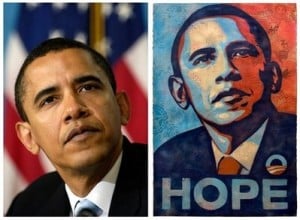While I wait for the buzz of local activity and excitement that comes with Spring, what could be better fun that partaking in the blawgosphere carnival, the Blawg Review? It’s perfect for my predicament. A fun celebration, globally shared in a space where it feels like it is always Spring. ~IP Think Tank
Blawg Review #222 is out at Duncan Bucknell’s IP Think Tank blog. This is from a blog site that practically provides an entire blawg review weekly in its fantastic IP updates.
In this week’s version, Blawg Review is replete with interesting law bites. Obviously, the top item is the “Gates-gate” fiasco circulating among the legal community as Fresno Criminal Defense writes about the connection between bigotry, prejudice, tolerance. Simple Justice asks if:
“[W]hat happened to Henry Louis Gates is the outgrowth of the conflict between law and order, order represented by police who have been empowered, in our post 9/11 age, to believe that their every command is the law, that our blind obedience is mandatory. Other than a few old-timers on the Supreme Court who live in a fantasy world where ordinary people can assert their rights and refuse to comply with the command of a police officer with impunity, this encounter between a distinguished scholar, within his own home, and a police sergeant who believes that his command is sufficient to create the divide between citizen and criminal, may offer the chance to question who commands whom in our society.”

Since Fairey did not seek or receive permission to use the photo in making his poster, the question is whether Fairey’s taking is defensible under the fair use doctrine, looking at the vague four-part statutory balancing test. Looking mainly at the fourth fair use factor, which requires judges to consider “the effect of the use upon the potential market for or value of the copyrighted work” in evaluating a fair use defense, the discussion focuses on whether an artist who creatively appropriates a news photograph needs to pay for a license to do so since Garcia has said that he would have given Fairey permission to use the photo if Fairey had simply asked him about it beforehand.
“I think this counterfactual characterization of a smoothly functioning licensing market suffers from hindsight bias in a couple of respects. For one thing, even if it were true that Garcia would have given Fairey permission to use the photo, his grant of permission may not have been sufficient. The A.P. claims that it is the copyright owner, so a good-faith effort by Fairey to clear the rights could still have landed him in trouble (copyright is a strict liability offense, so an innocent state of mind would not be a defense). And corporations have a track record of not extending as much generosity to potential licensees as individual owners might. (In any event, I’m not so convinced that Garcia would have been so generous. If he really was so indifferent to Fairey’s—or anyone’s—profiting off of his photo, why would he now be joining the lawsuit and seeking to claim ownership of the work?) Finally, markets in creative work don’t function as seamlessly as markets in stocks or commodities, where actors regard the goods in trade as largely fungible. Rather, copyright cases are full of instances where owners reject a lucrative licensing offer for personal or idiosyncratic reasons (e.g., Campbell v. Acuff-Rose; Fisher v. Dees).”
For our own addition this week, we’d like to submit Free Range Kids’ article on Haverford, PA, cops preventing a massive terrorist plot to raise money by going door to door selling lemonade. The group, known as the “Haverford Seven” and made up of seven children including a set of 5-year-old triplets, were busted after ever-vigilant neighbor William Nickerson recognized the evil plot to distribute uncontrolled substances without a permit and dutifully ratted out the group. There is no word on whether the Obama administration had considered deploying active military troops to arrest the group.
More on living in a police state:
- The terrorist haven known as the City of Lancaster, CA (pop. 145,000), wants a 24-hour spy plane to patrol the city for a cool $1.5M a year.
- Alabama (pop. 4,600,000) has banned Cycles Gladiator wine, produced by Hahn Family Wines in Soledad, Calif., for showing a vintage 1895 advertising poster for Cycles Gladiator bicycles on the label. The wine label — showing the known terrorist coded message of a nude nymph flying beside a winged bicycle — was just too much for Alabama’s liquor control agency.

[…] Pros and Cons of Photo Sharing on Facebook vs. Flickr « Daniel Greene’s Blog-o-ramaThe Photographs of Sze Tsung Leong at Mark LamsterWhen 80s Punk hypnotised me By Cherry Vega | répandre la lumière Talk to Your Kids about ‘Sexting’, a Dangerous Trend. : WhatHappensNow.com Blog Camera RAW 101 by Jon Canfield | XtremeCameraThe most sizzling blogs in town by Girl Next Door Sofie and night-life expert Buwayahman | FHM.com.phPebbles From Paradise » Blog Archive » Domestic Nudes by Helmut Newton, Jean-Leon Gerome and Me Maternity Photography – Getting Professional Pregnancy Portraits — Bella Photo Jewelry BlogSteve Diet Goedde: The Beauty of Fetish | YUHMM – Taste it.Patent Baristas » Blawg Review: Melbourne in Spring Edition […]